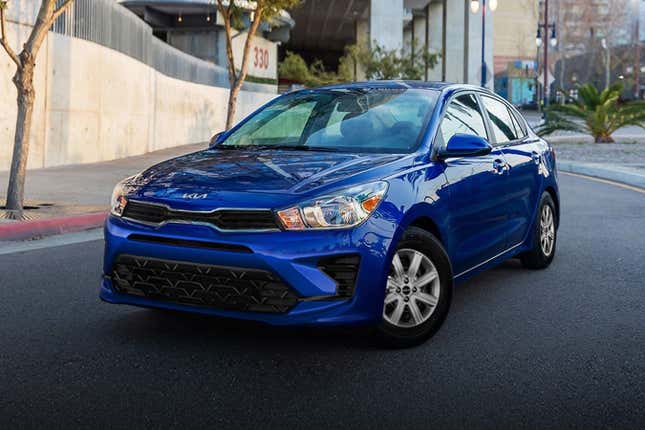Friends, I come to you bearing ill tidings. Just days after rumors of the Mitsubishi Mirage’s death began to spread, another of our great allies has fallen. The Kia Rio, friend to all those looking to spend under $20,000 on a car, is shuffling off its mortal coil.
Kia confirmed the Rio’s death to Automotive News yesterday. The cheap, practical sedan is another victim of an American auto market that’s grown obsessed with size, features, and cost — and cannot bear to carry anything that’s small, simple, and cheap.

Just over a decade ago, the United States lost its last sub-$10,000 car. With the death of the Rio, we’re now one step closer to the end of the sub-$20,000 car — the bottom of the American market is simply falling out. Car prices are ticking ever upward, as automakers follow emissions laws that heavily favor larger, taller vehicles. The fact that companies can justify higher prices for these higher vehicles, based on ideas like “space” and “capability,” is just a bonus to them — and a detriment to commuters.
Was the Rio as luxurious as a Lexus, as comfortable as a Cadillac, or as palatial as a Porsche? Absolutely not. But when all you need to do is get to work and back, the Rio got the job done for far less cost than any fancy upsell. It was a humble car — a car that did its job, and got you to yours, while asking as little as it could in return.
Car loan terms are ever increasing, with buyers making more and more payments just to try and afford each month. Affording a new car now has a tinge of desperation — the need to do anything, take any available avenue, to be able to afford your only form of mobility through the world. If we’re going to keep killing off small, practical, cheap cars, and replacing them with massive crossovers that cost thousands more, can we at least get some commuter rail in exchange?